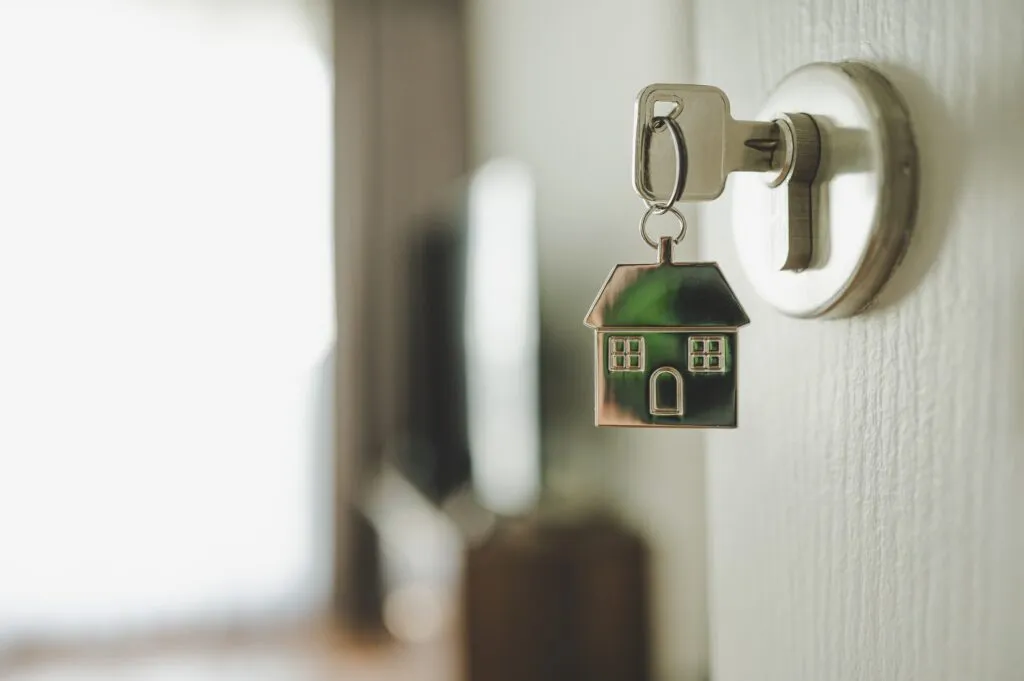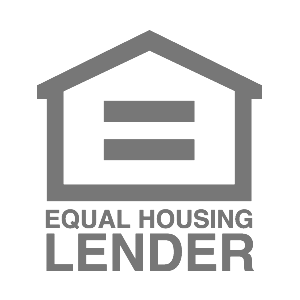
Does home buying seem expensive? Unfortunately, it might cost more than you think.
Many buyers only focus on the sales price when looking for a home they can afford. But if you don’t prepare for an additional list of homeowner expenses, from mortgage interest to property maintenance, you could end up in financial trouble.
According to a study from Zillow and Thumbtack, the average annual cost to own and maintain a home is over $14,000, or about $1,180 a month. As you put together your homebuying budget, consider these unexpected and overlooked costs.
In This Article
Up-front expenses
To buy a home, you’ll likely have to cover part of the purchase price plus various fees. Here’s how your expenses will break down:
Down Payment
You’ve probably heard you need a 20% down payment to buy a home. While it’s true that putting 20% down can save you money, since it relieves you from having to pay Private Mortgage Insurance (PMI) and reduces the amount you borrow, it’s not a requirement.
According to the National Association of Realtors, the average down payment for first-time homebuyers was 8% in 2023 and 19% for repeat buyers. At the median sales price of $384,500, an 8% down payment totals $30,760.
If you’re struggling to manage your current expenses and save for a down payment, check to see if you qualify for a homebuyer assistance program or one of these government-backed loans with flexible requirements:
- VA-guaranteed loans: Low or no down payment
- USDA loans: Low or no down payment
- FHA loans: Down payment as low as 3.5%
Closing costs
Closing costs usually range from 2% to 5% of the loan amount. This bundle of expenses, which must be fully paid to close on the loan, typically includes the following fees and services:
- Lender fees
- Title fees
- Initial taxes and insurance
- Home inspection and appraisal
- Real estate commissions
For the median-priced home of $384,500, a 2% to 5% closing cost adds up to anywhere from $7,690 to $19,225, but buyers should note they can reduce the overall expense by negotiating some of the fees with the lender.
Moving
Many people forget to add moving to their list of home ownership costs. However, the price tag can be significant for anyone who has multiple bedrooms to move, is relocating long distance, has fragile items to move, or has stairs in their building.
If you hire professional movers, a local move could cost $1,000 or more, and a long-distance move could start around $4,000 or $5,000.
You might opt to rent a truck from U-Haul or Penske and move your belongings; it’s certainly more work, but it can save you a lot of money on hiring professionals.
Furnishings
It’s not a requirement for homebuyers, but many people feel the urge to decorate their new pad with brand-new furnishings. In fact, there’s even a name for this impulse: Old Sofa Syndrome.
Depending on the size of the home, springing for all-new rugs, sofas, curtains and more, could run you anywhere from $4,000 to $100,000.
If you want to avoid this potential budget-buster, consider waiting until you’ve lived in the home for three months and then making a list of the most important items you still need or want.
Ongoing expenses
As a homeowner, you’ll not only have to cover the cost of buying a house but you’ll have to stay on top of a handful of ongoing expenses, all of which can put a strain on your budget if you’re not prepared.
Mortgage payment
Taking on a mortgage often means committing to a set monthly payment for 30 years. In early 2024, Zillow says the typical monthly payment taken on by new buyers was $1,790.
Regardless of the amount you pay, most people don’t realize this monthly expense covers several, if not all the following costs, which are commonly referred to using the acronym PITIA:
- Principle: The amount you borrowed from the lender
- Interest: The fees on your outstanding loan balance
- Taxes: Real estate taxes
- Insurance: If required, homeowner’s, flood or Private Mortgage Insurance (PMI)
- Association dues: If applicable, Homeowners Association (HOA) dues
When it comes to PMI, the lender or servicer must cancel this expense once your loan balance drops down to 78% of the value of your home, but you can request to have it canceled once you hit 80%.
However, even after you pay off your loan, you’ll still have to pay property taxes and HOA dues or risk losing your home.
Maintenance and repairs
Being a homeowner means you can’t simply call the landlord when things break. Maintenance is solely your responsibility, which means if you can’t afford repairs, your home may become uninhabitable, or you may need to take out a home improvement loan.
According to data from Thumbtack, the average annual cost to maintain a single-family home reached $6,663 at the end of 2023. The cost of home maintenance varies depending on the size, age, and previous upkeep of the house.
As a rule of thumb, experts recommend budgeting as much as 4% of your home’s value each year for repairs and maintenance. For a home valued at the 2023 median sale price of $384,500, that comes out to $15,380 to cover repairs and maintenance. Items covered in that cost include:
- Roofing
- Heating, ventilation, and air conditioning (HVAC)
- Plumbing
- Mold or water damage
- Landscaping
- Pest control
4 tips to budget for homeownership costs
If all of these expenses seem like they’ll blow your budget, there’s good news: some costs of owning a home can be negotiated or reduced. Here are a few ways to make sure all of these home ownership costs truly fit into your budget:
Start early
Find out what you can really afford by giving yourself a test-run. Do this by adding up all of the expenses on our list to see how much they would increase your average monthly expense.
Then, set aside that increased amount each month for at least three months before you buy. If you can’t cover the difference, you’ll need to change your homebuying plans.
Borrow less
You don’t have to borrow the total mortgage amount you’re approved for. While lenders approve you based on a partial review of your finances, they don’t know your whole situation and there’s a chance they’ll offer you a loan you can’t afford.
Be on the safe side and borrow an amount you can comfortably repay, with maintenance and other homeownership costs included.
Use a homebuyer assistance program
If you can’t find a way to make homebuying work, a homebuyer assistance program could help. Check for federal, state and local programs that can cover some or all of your down payment or give you access to low-cost housing.
Take advantage of the tax benefits
Homeowners can offset some of their expenses by taking advantage of tax benefits. If you’re a first-time homebuyer, check to see if you qualify for a Mortgage Credit Certificate (MCC), which can reduce your annual tax bill by as much as $2,000.
Homeowners should also make sure to properly deduct mortgage interest (which will be significant in the early years of your loan payment) and property taxes from their taxable income.
Remember, it’s an investment
Being a homeowner can be expensive, but for many Americans, the benefits far outweigh the costs. Keep in mind that your property value can increase over time, giving you access to home equity you can use if needed, and your mortgage payment isn’t forever.
But if you fail to budget for all of your home ownership costs, your time in the new home could be shorter than expected.
To avoid missing payments, damaging your credit or facing foreclosure, take the time to see if all of these expenses really fit into your budget before taking on this major financial responsibility.
Written by Sarah Brady | Edited by Rose Wheeler
Sarah Brady is a financial writer and speaker who’s written for Forbes Advisor, Investopedia, Experian and more. She is also a former Housing Counselor (HUD) and Certified Credit Counselor (NFCC).
Read more:
- Buying a Home for the First Time: What You Need to Know
- How to Handle Unexpected Expenses
- Using a HELOC to Pay Off Your Mortgage
- How to Make Eco-Friendly Home Improvements
- What Credit Score Is Needed to Buy a House?
All personal loans made by WebBank.
Eligibility for a home equity loan or HELOC up to the maximum amount shown depends on the information provided in the home equity application. Depending on the lender, loans above $250,000 may require an in-home appraisal and title insurance. Depending on the lender, HELOC borrowers must take an initial draw of the greater of $50,000 or 50% of the total line amount at closing, except in Texas, where the minimum initial draw at closing is $60,000; subsequent HELOC draws are prohibited during the first 90 days following closing; after the first 90 days following closing, subsequent HELOC draws must be $1,000, or more, except in Texas, where the minimum subsequent draw amount is $4,000.
The amount of time it takes to get funds varies. It is measured from the time the lender receives all documents requested from the applicant and depends on the time it takes to verify information provided in the application. The time period calculation to get funds is based on the first 4 months of 2023 loan fundings, assumes the funds are wired, excludes weekends, and excludes the government-mandated disclosure waiting period.
For Texas home equity products through Prosper, funds cannot be used to pay (in part or in full) non-homestead debt at account opening.
Depending on the lender, qualified home equity applicants may borrow up to 80% – 95% of their primary home’s value and up to 80% – 90% of the value of a second home. In Texas, qualified applicants may borrow up to 80% of their home’s value. HELoan applicants may borrow up to 85% of the value of an investment property (not available for HELOCs).
Home equity products through Prosper may not be available in all states.
All home equity products are underwritten and issued by Prosper’s Lending Partners. Please see your agreement for details.
Prosper Marketplace, Inc. NMLS# 111473
Licensing & Disclosures | NMLS Consumer Access
